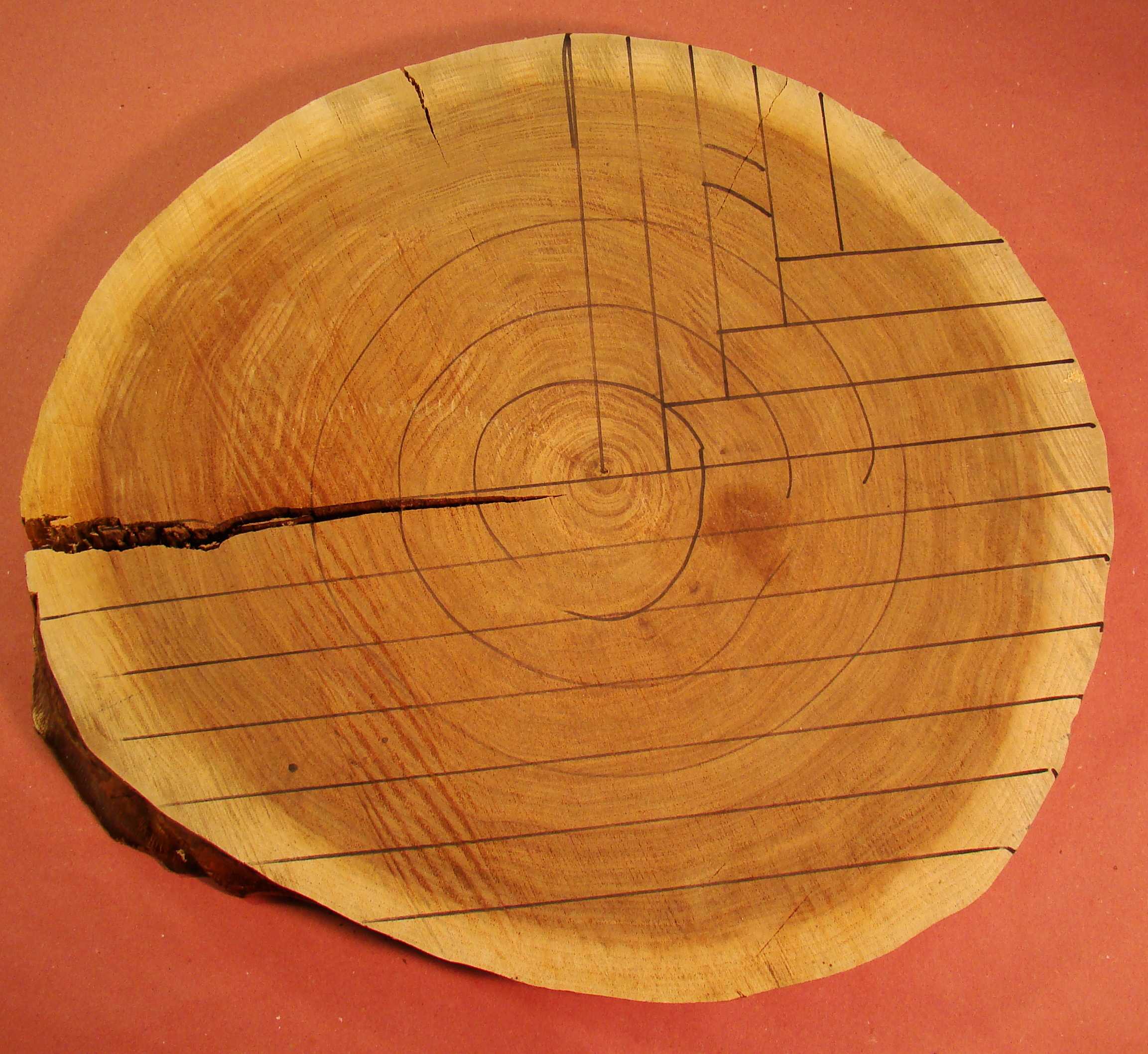Sawn timber is timber that is cut from logs into different shapes and sizes. Sawn timber is generally cut into varying rectangular widths and lengths, but may also be wedge shaped. Common sawn timber products include solid timber beams and more rectangular timber sections.

Quarter sawn timber
Also called quarter cutting, with quarter sawn timber the growth rings are parallel to the short face. The long face of every board is close to a radial face. A large number of growth rings can be seen on this face. Quarter sawing timber is best for hardwood species that are prone to collapse during drying.
Quarter swan timber has the following advantages:
- Best grain shows on face
- Good wearing surface for floors, furniture
- Radial face preferred for coatings
- Lower width shrinkage on drying
- Less cupping and warp than other cuts
- Can be successfully reconditioned.
The disadvantages of quarter sawn timber include:
- Slower seasoning
- Nailing on face more prone to splitting.
Back sawn timber
Also known as back cutting and tangential cutting, back sawing is the most common sawing method used in Australia. Back sawing helps to obtain high-grade timber from logs.
Most structural timber and many appearance products are back sawn. With back sawn timber, the long face of each board is close to a tangential face, and the short face is close to a radial face.
Growth rings are parallel to the long edge and the wide face does not intersect many growth rings. The growth rings on the wide face appear to be very wide apart, and some interesting patterns can be seen.
This cut offers more flexibility in that quite large boards can be back sawn from the wings of logs. Here the maximum depth can be just less than the diameter of the log.
Back sawn timber has the following advantages:
- Seasons more rapidly
- Good figure on face
- Less prone to splitting when nailing
- Wide sections possible
- Few knots on edge.
The disadvantages of back sawn timber include:
- Shrink more across width when drying
- More likely to warp and cup
- Collapsed timber more difficult to recondition.
Radial sawn timber
This cut is not very common, and if required would need special negotiation with the mill. However, radial sawing has an efficiency that the other cuts cannot achieve, and makes optimal use of a log.
Because of the cutting pattern, each piece of radially sawn timber is a wedge shape. It has sapwood on the wider edge and pith or corewood at the point.
As real logs are not perfectly round and not perfectly straight, each radially sawn board reflects the longitudinal shape of the log.
These details can make for interesting architectural use of the timber. Apart from flooring, radial sawn timber is used mainly for external applications such as cladding, decking, poles, wedges and timber screens.
Radial sawn timber has the following advantages:
- Dimensional stability
- Less prone to warping, cupping
- Less wastage in milling.
The disadvantages of radial sawn timber include:
- Wedge shaped cross section
- More difficult to detail
- More difficult to stack.
Sawn timber will either be available as unseasoned or seasoned:
- Unseasoned timber – is classified according to its moisture content. Any timber with a moisture content > 25% is said to be unseasoned or ‘green’. However, for practical reasons, most timber sold as unseasoned has a moisture content > 15% rather than the more strict definition of unseasoned timber (> 25%).
- Seasoned timber -producing seasoned timber is the process of drying timber to remove the bound moisture contained in walls of the wood cells. Seasoning can be achieved in a number of ways, but the aim is to remove water at a uniform rate through the piece to prevent damage to the wood during drying (seasoning degrade). Seasoned timber has a moisture content between 10 and 15%. Timber in this condition will be in equilibrium with internal environments in many parts Australia.
Seasoned timber has a reduced weight, improved strength and the cross sectional dimensions remain almost constant. It is more stable than unseasoned timber and is much less prone to warping and splitting. It also provides improved gluing and nail-holding properties and increased joint strength.
In higher grades of timber, particularly hardwoods, the process of seasoning can enhance the basic characteristic properties of timber, increasing stiffness, bending strength and compression strength. Seasoned timber should be chosen for indoor use where it is particularly important not to have shrinkage associated with drying out in service.
